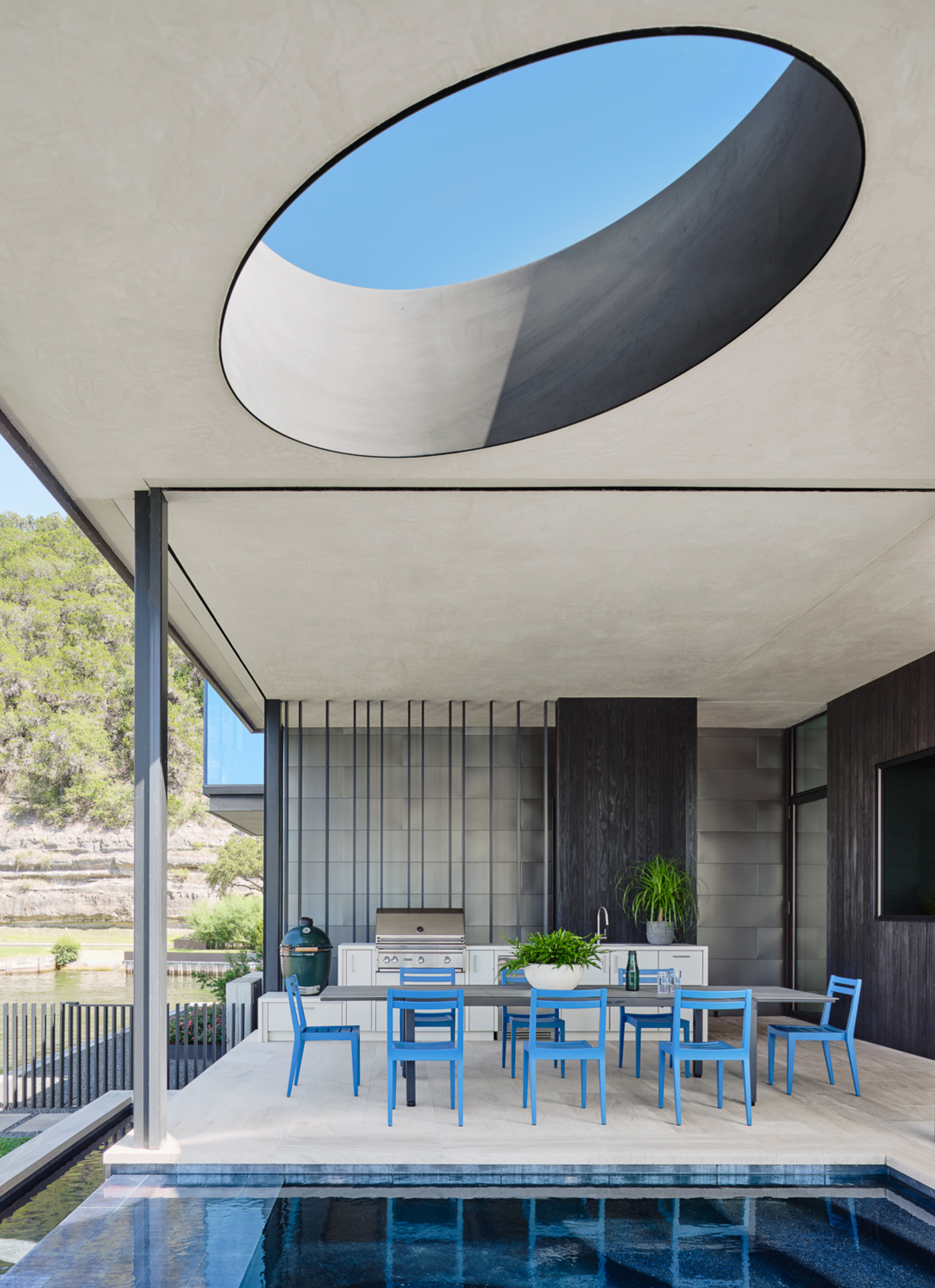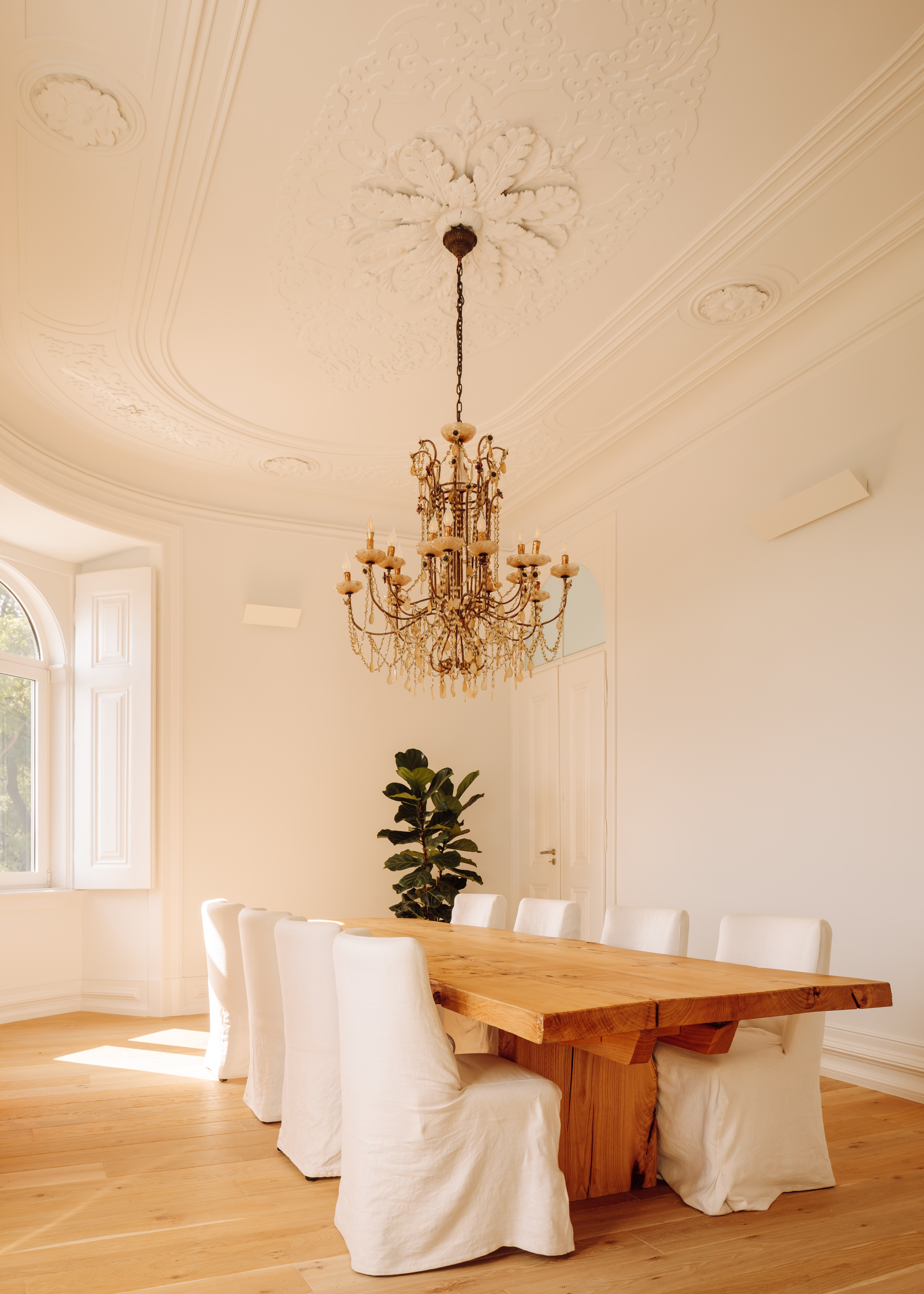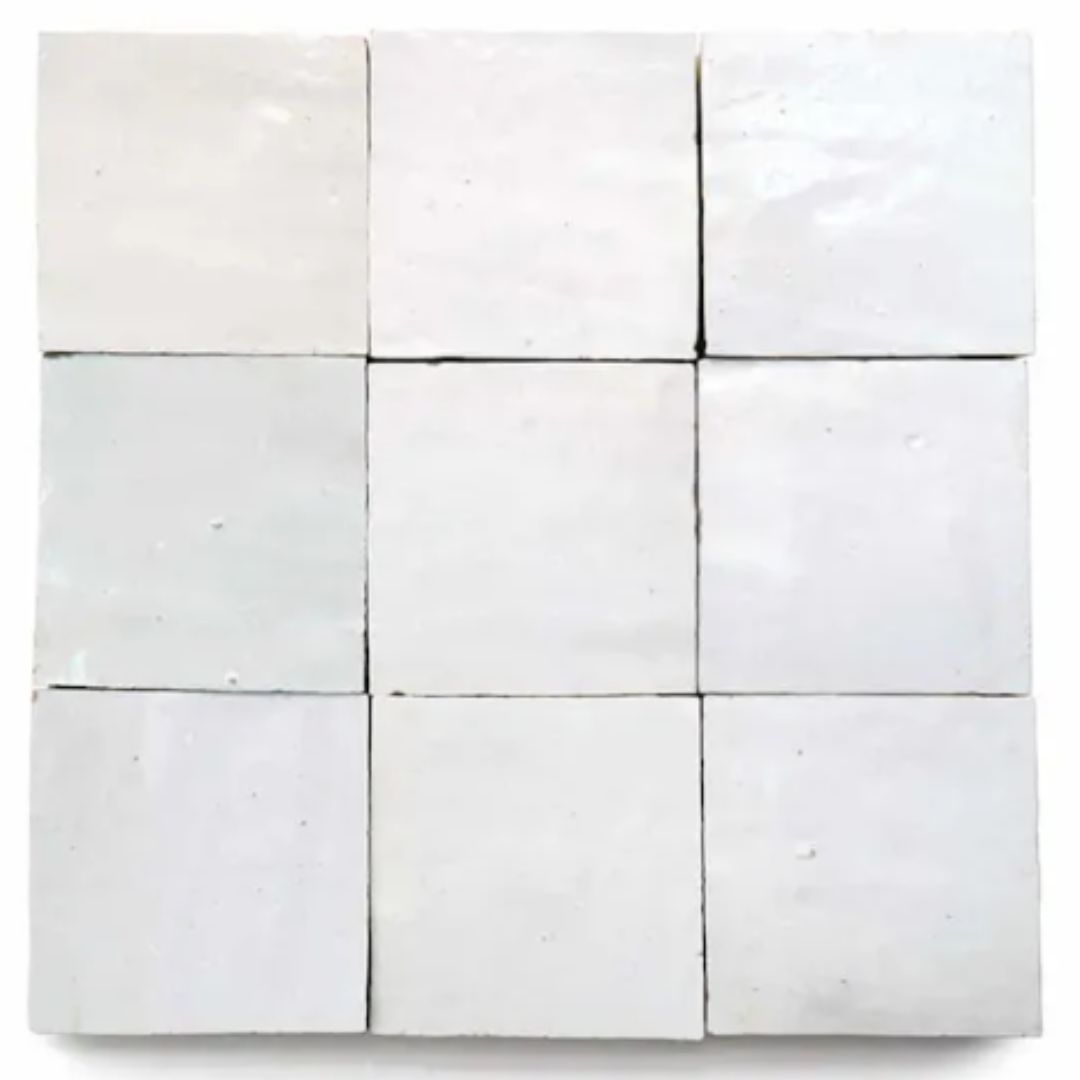Ceiling Decorating Ideas — 12 Ways to Make the "Fifth Wall" the Star of Your Home's Design
Fresh inspiration for decorating your home's ceilings from top interior designers, as seen in their most creative projects


Once left as plain white surfaces, we've seen myriad creative ideas for decorating a ceiling become a really big trend in interior design. When decorated, this very important 'fifth wall' encourages you to look up, take in the entire room's dimensions, and truly feel like you're enveloped in design. The ceiling can add warmth, elegance, and ambiance to a room. In today's modern interior design, it is as important (if not more!) as the other four walls.
There are several ways to uplift its look — with a simple coat, interesting finishes, intricate moldings, or more. Design tricks can also make the ceiling feel taller, or lower, as required. So, are you ready to add an eyeful of interest to your ceiling? These expert-approved ideas will inspire you.
1. Paint the ceiling

Painted ceilings are the easiest way to draw eyes up. Whether you paint just one tone away from the wall color or go in for bright raspberry, dark gray, or black, a painted ceiling will make your room look truly decorated and complete. Consider a gloss or semi-gloss finish if you're wondering how to paint a ceiling in more interesting ways.
'This dining room is a passthrough from the living room to the kitchen, and we wanted to give it some weight to slow the traffic and make it feel like a destination,' says Heather Peterson, founder of Heather Peterson Design. 'Farrow and Ball's Studio Green is nearly black in some lights, but we loved the green undertones to draw the eye out to the garden. A white ceiling would have been much too bright with the high contrast. Farrow and Ball's Setting Plaster is chalky, glowy, and not too pink. We painted the crown molding in the same shade to give the illusion of a cove ceiling. Leaving the crown white would have created a jarring divide between tones.'
2. Or wallpaper it

Wallpaper trends have continuously shown us that ceilings are great candidates for design. Wallpapering the fifth wall makes for a great unexpected ceiling treatment, and adds a coziness to the room. This idea can work especially in smaller rooms or kids rooms where it's easier to be bold. A wallpapered ceiling can add playfulness to the room.
'The ceiling was designed to mimic a soccer ball,' says Abby Gruman of Abby Leigh Designs. 'The client is an 11-year-old boy and loves soccer! We wanted to bring in his favorite sport but not in an immature way. I chose this wallpaper as a sophisticated way to bring in the colors of the soccer ball — black and white!'
3. Design a ceiling with beams

This might not be an easy design addition to an existing living room or bedroom ceiling, but a vaulted ceiling or one with beams can add a cozy, period style to your home. Take this bedroom, for instance, designed by Vitale Design Group. To blend the beams into the more modern, sleek style of the space, the designer painted it black. Since the room receives plenty of sunlight, the dark-toned ceiling does not make the room feel gloomy.
The Livingetc newsletters are your inside source for what’s shaping interiors now - and what’s next. Discover trend forecasts, smart style ideas, and curated shopping inspiration that brings design to life. Subscribe today and stay ahead of the curve.
'A vaulted ceiling with exposed collar ties or other structural components like beams is a great way to add volume and interest to a bedroom,' says interior designer Michelle Mele. 'We love exposing existing structural components in place and just finishing them nicely.'
4. Consider a gold leaf treatment

With interiors becoming more modern and slick, you may wonder if gold leaf is out of style. But designers say that there are ways to make it feel fresh and visually appealing. After all, it's a way to add texture to a space.
'The most important aspects are application and a well thought out plan,' says Donna DuFresne, founder of Donna DuFresne Interior Design. 'If done well, gold leaf can bring a sophisticated touch to a space, but if done poorly, it can easily become a bit gaudy.'
If you are keen on gold leafing, then ceiling apart, you could add this element to the furniture, inside storage cubbies, around mirrors, architectural features, and more. Keep the rest of the decor subtle so that the room doesn't feel too overwhelming.
5. Add drama with ceiling beads

The idea may seem hard to execute but it's actually quite simple. Several retailers offer long strings of beads or even cascading pendant lights that you can suspend from above. These can, in fact, create an interesting, layered effect in the room. For a whimsical, impactful entryway, consider hanging these from the ceiling or the fans.
'The trick was unifying patterns and materials thoughtfully and seamlessly that made a unique statement,' says interior designer Bennett Leifer. 'The overall gridded pattern flows into a pixelated mirror frame. The design also transitions into a beautiful curvilinear pattern on the walls to the floor and ceiling that draws the eye to where the lighting is swagged in unison with the fringe.'
6. Make a statement with a skylight

Nothing sets an outdoor kitchen mood better than a well-planned space that can open and close as per the weather. This impressive poolside space is a great example.
'In this serene setting, an effortlessly relaxed lifestyle unfolds with outdoor living taking center stage along the water's edge,' says Patrick Mobley of LaRue Architects. 'This covered space offers respite from the Texas heat, hosting a fully-furnished retreat equipped with an outdoor kitchen, dining space, plunge pool, firepit, and premium seating arrangements that afford unparalleled views of the lake. The plaster soffits appear as if the interior ceiling runs through to the exterior. It contains a concealed roll-down screen designed into the soffit for protection.'
7. Inject whimsy with a dimpled ceiling

A great kitchen or living room ceiling idea is of a coffered or dimpled ceiling — but we don't mean the old, heavy, wooden vintage designs. Take a look at this project by Braginskaya & Architects and Marina Baisel. The modern look is created with the hexagonal ceiling design which adds texture and movement to the room.
'The rhythmical shapes in the design of the floors and ceilings give some dynamic energy to the calm and relaxed atmosphere of the house,' says Marina.
8. Or a geometric one

If your living room's scheme starts feeling a bit too one-dimensional, consider a ceiling design that is layered and unique.
'The ceiling design incorporates an intricate geometric pattern, adding depth and visual interest to the space,' says Sara Swabb of Storie Collective. 'The alabaster hanging globe lights, suspended from chains, adds a touch of vintage charm, enhancing the room's classic and timeless appeal.'
9. Paint the ceiling and walls the same color

This is a great way to create a seamless, clean, and enveloping design, especially useful in smaller rooms that need to feel larger than they are. The uniform color dilutes the lines between the walls and the ceiling and makes the room feel bigger, and more contemporary.
If you're painting the ceiling and walls the same color in the bedroom, then experts suggest tones that not only look aesthetically pleasing but also help you sleep better.
‘Pastel colors such as soft green, blue and lavender calm and relax, and help with anxiety,' says Christine Hansen, CEO of Sleep Like A Boss. 'Avoid dark colors which will make you feel more confined and won’t motivate you to get up in the morning.’
10. Tile it up

No, tiles aren't only meant for floors and walls. The tiled ceiling trend has taken over interiors recently, adding a beautiful, decorative touch to spaces.
This element adds so much textural richness to a space. Even though tiled ceilings are rising in popularity, this is a centuries-old movement. 'It is essentially maintenance-free and requires little cleaning to maintain integrity,' says Tanner Morgan, designer and principle of Morgan Madison Design, who has used tile on the ceilings in many of their projects.
11. Choose a recessed lighting feature

This is a subtle way to highlight your ceiling without making it feel too overwhelming. Consider recessed accent lights and use them to accentuate an architectural feature on the ceiling. These bedroom, kitchen, or living room ceiling light will add style, elegance, and depth to your interiors.
'Accent lighting is drawing attention to particular areas within the home,' says Ian Cameron, creative director at Cameron Design House. 'Use these to light up an artwork, highlight specific features of the home, or illuminate darker areas within a space.'
12. Bring focus to the crown molding

Decorative medallions, crown moldings , and more add a flair of antiquated character, charm, and architectural detail that is hard to match. If you live in a home that is already gifted with this feature, then utilize it to the maximum potential. Paint it, add a shiny finish, or color the ceiling borders to make this element pop. Texture is an important design must-have, and moldings are a great way to emphasize this element. In case your home does not have this period element already present, you can always have a painter/building weave it into your home's design.
‘The purpose of cornicing is to introduce order into a room, laying the groundwork upon which interior decoration can build,’ says interior designer Max Rollitt.
How can I make my ceiling look better?
There are several ways to upgrade the look of your ceiling. The more budget options include paint, wallpapers, textured finishes and recessed lighting ideas. But if you're renovating or building your home from scratch, you could consider ceiling beams, crown moldings, coffered-to-arched ceilings, or even tiling.
How can I make my exposed ceiling look better?
There are a few ways to make exposed ceilings look and feel more finished and sleek. If you have exposed beams, you could paint them or even apply wallpaper on the beams, leaving the ceiling part exposed. Also, consider interesting paint finishes like satin or semi-gloss finishes. You could add LED strips along the corners of the ceiling to lift its look.

Aditi Sharma Maheshwari started her career at The Address (The Times of India), a tabloid on interiors and art. She wrote profiles of Indian artists, designers, and architects, and covered inspiring houses and commercial properties. After four years, she moved to ELLE DECOR as a senior features writer, where she contributed to the magazine and website, and also worked alongside the events team on India Design ID — the brand’s 10-day, annual design show. She wrote across topics: from designer interviews, and house tours, to new product launches, shopping pages, and reviews. After three years, she was hired as the senior editor at Houzz. The website content focused on practical advice on decorating the home and making design feel more approachable. She created fresh series on budget buys, design hacks, and DIYs, all backed with expert advice. Equipped with sizable knowledge of the industry and with a good network, she moved to Architectural Digest (Conde Nast) as the digital editor. The publication's focus was on high-end design, and her content highlighted A-listers, starchitects, and high-concept products, all customized for an audience that loves and invests in luxury. After a two-year stint, she moved to the UK and was hired at Livingetc as a design editor. She now freelances for a variety of interiors publications.






